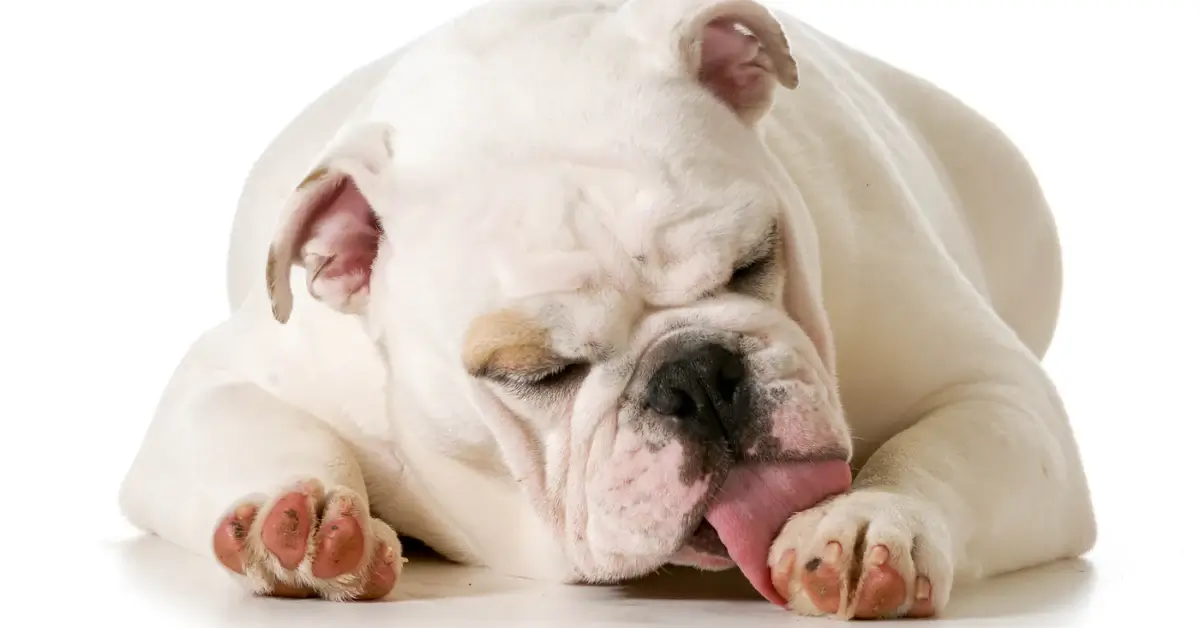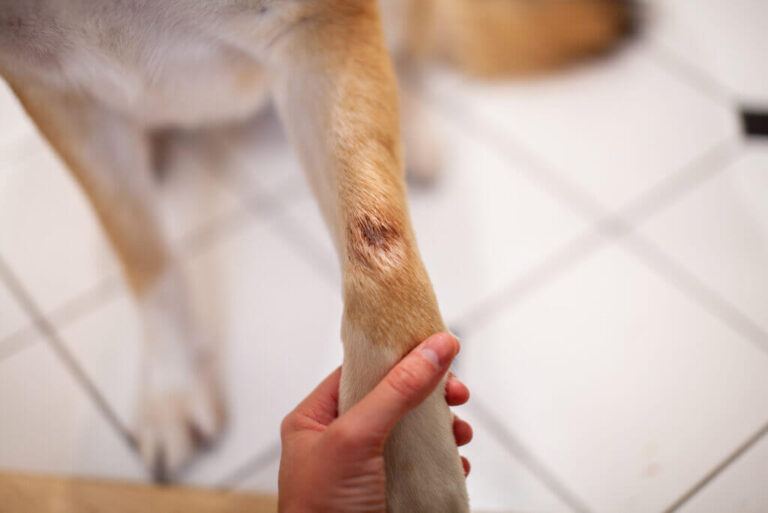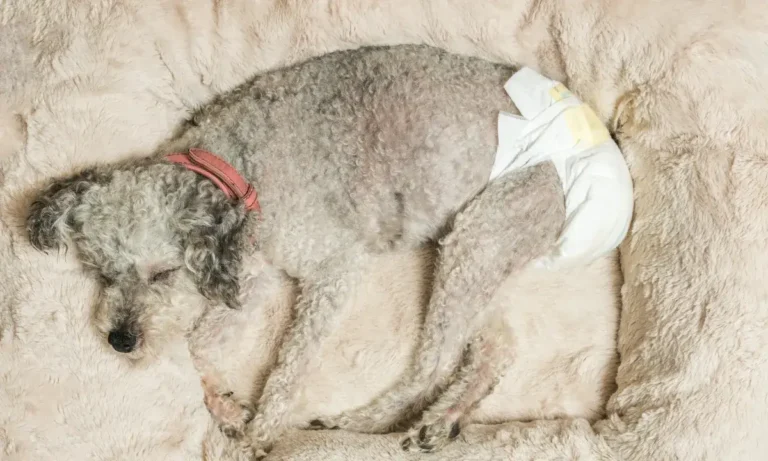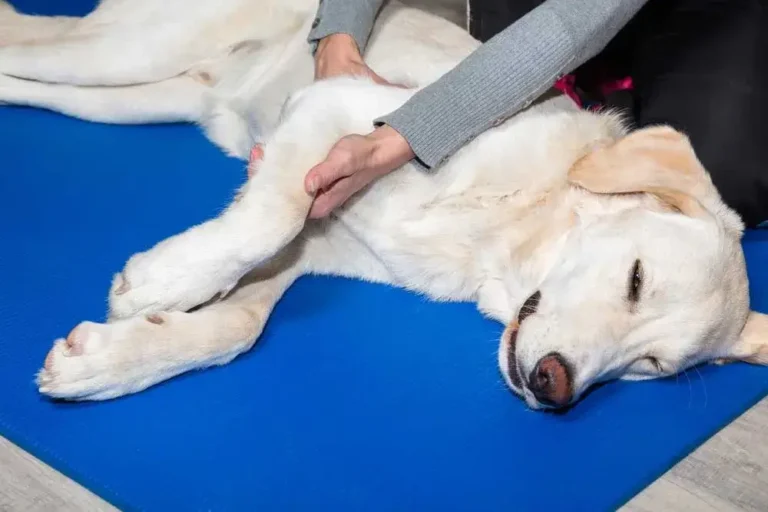Why Dogs Lick Excessively: Understanding the Causes and Solutions
Licking is a natural and instinctive behavior for dogs. From grooming to exploring their environment, dogs use their tongues to interact with the world around them. However, when licking becomes excessive, it can be a sign of underlying issues, either behavioral or medical, that require attention. Understanding why dogs lick excessively is essential for pet owners and veterinarians to address the issue effectively. In this article, we’ll delve into the causes of excessive licking in dogs and offer practical solutions for managing the behavior.
Contents
When Does Licking Become Problematic?
While licking is a natural behavior, it becomes problematic when it occurs excessively or in a way that disrupts your dog’s daily life. For example, if your dog licks itself, you, or objects non-stop, it could indicate that something isn’t quite right. Excessive licking may lead to skin irritation, hair loss, or the development of hot spots. Sometimes, it can also signal underlying medical or behavioral issues that require intervention.
Behavioral Causes of Excessive Licking

1. Boredom
Dogs, especially those left alone for long periods, may lick to entertain themselves or release pent-up energy. This behavior is particularly common in high-energy dogs that aren’t receiving enough physical or mental stimulation.
How to Manage It:
- Provide regular exercise and mental stimulation through activities like puzzle toys, training sessions, and playtime.
- Consider employing a dog walker or enrolling your dog in doggy daycare to provide social interaction if you’re away for long periods.
2. Anxiety
Licking is a self-soothing behavior that dogs often engage in when they’re feeling anxious. Dogs may lick their paws, faces, or even objects to calm themselves in stressful situations, such as when there’s a change in their routine, unfamiliar visitors, or separation anxiety.
How to Manage It:
- Address the source of anxiety by maintaining a consistent routine and providing a safe space for your dog.
- Use calming products like anxiety wraps, and pheromone diffusers, or consult a dog behaviorist for strategies to manage anxiety.
3. Affection
Dogs lick their owners as a sign of affection. It’s their way of showing love and bond, similar to how puppies lick their mother or littermates. While this is typically not harmful, it can become excessive if the dog is overly reliant on licking for attention.
How to Manage It:
- Encourage alternative ways of expressing affection, such as through cuddling or playing.
- Use positive reinforcement when your dog stops licking and redirects their attention to other activities.
4. Seeking Attention
Dogs quickly learn that licking is an effective way to get attention from their owners. Whether they’re looking for a pet, a treat, or simply to be noticed, licking can be a way for your dog to communicate their desire for interaction.
How to Manage It:
- Ignore the licking behavior when your dog tries to gain attention in this way.
- Reward your dog with attention when they exhibit positive behavior, such as sitting calmly or playing.
5. Habit
Licking can sometimes become a habitual behavior, especially if it’s been reinforced over time. Some dogs lick for no particular reason other than it has become a routine part of their day.
How to Manage It:
- Break the habit by offering alternative activities like chew toys or engaging in active play.
- Use redirection techniques, like offering a tasty treat or favorite toy when your dog starts licking.
6. Liking the Taste of Their Owners’ Skin
Some dogs are drawn to the salty taste of human skin, particularly after physical activity or in hot weather. If your dog licks your skin excessively, it could simply be due to this attraction.
How to Manage It:
- Redirect your dog’s attention to toys or other activities to prevent licking.
- Consider using barrier sprays that make your skin less appealing to lick.
Related: Why Do Dogs Lick Their Lips?
Medical Causes of Excessive Licking

If the behavioral causes do not seem to fit the situation, excessive licking may be due to an underlying medical issue. Below are common medical conditions that could lead to this behavior.
1. Allergies
Dogs with allergies, whether food-related or environmental (such as pollen or dust mites), may lick excessively due to itching or irritation. The licking is often focused on areas like the paws, ears, or face.
How to Recognize It:
- Red, inflamed skin, excessive licking of paws, or ear infections.
- If your dog is licking specific areas or has visible skin irritation, allergies could be the cause.
How to Manage It:
- Consult with your veterinarian to determine the cause of the allergies and adjust your dog’s diet or environment accordingly.
- Medications like antihistamines or corticosteroids may be prescribed to help manage allergy symptoms.
Related: Top 10 Best Dog Food for Skin Allergies
2. Skin Infections
Skin infections, whether bacterial or fungal, can cause intense itching and discomfort, leading dogs to lick the affected areas. Hot spots, which are inflamed and infected patches of skin, are a common result of excessive licking.
How to Recognize It:
- Hair loss, redness, swelling, or pus on the skin.
- If your dog is persistently licking a specific spot, it could be infected.
How to Manage It:
- Consult your vet for proper diagnosis and treatment.
- Follow your vet’s recommendations for topical or oral antibiotics and discourage licking with an Elizabethan collar or bandages.
3. Pain
Dogs may lick an area that hurts, such as joints, wounds, or sore spots. This could be due to arthritis, injury, or even internal discomfort.
How to Recognize It:
- Licking focuses on a particular spot or area of the body.
- Signs of limping, stiffness, or whimpering.
How to Manage It:
- Visit your vet to assess any possible injuries or pain.
- Pain relief medications, joint supplements, or physical therapy may be required to help manage the pain.
4. Obsessive-Compulsive Disorder (OCD)
OCD in dogs can lead to compulsive behaviors like excessive licking, which can become a repetitive, uncontrollable pattern. Dogs with OCD may lick themselves, objects, or even people without any apparent reason.
How to Recognize It:
- Repetitive licking that seems disconnected from any external stimulus or need.
- Difficulty stopping the licking even when distracted.
How to Manage It:
- Consult a vet or a canine behaviorist for advice on managing OCD.
- Treatment may involve behavior modification techniques, medications like selective serotonin reuptake inhibitors (SSRIs), or other calming interventions.
5. Gastrointestinal Issues
Some dogs lick excessively when they’re experiencing discomfort in their digestive system. This can include nausea, gastrointestinal pain, or even hunger, which may prompt licking as a response to the discomfort.
How to Recognize It:
- Licking around the mouth, paws, or air sniffing behavior.
- Other signs of digestive issues, like vomiting, diarrhea, or lack of appetite.
How to Manage It:
- Address the underlying cause with the help of a veterinarian, who may recommend dietary changes or medication for digestive health.
6. Parasites
Fleas, ticks, and other external parasites can cause itching and irritation, leading dogs to lick the affected areas to relieve discomfort. Flea allergy dermatitis can lead to intense itching and licking.
How to Recognize It:
- Licking is accompanied by visible fleas, ticks, or other signs of parasites.
- Inflamed, red skin in areas where fleas or ticks have bitten.
How to Manage It:
- Use preventive flea and tick treatments as recommended by your vet.
- Treat any infestations promptly to reduce irritation and prevent further licking.
How to Stop Excessive Licking
Behavioral Interventions
- Positive Reinforcement: Reward your dog when they engage in desirable behaviors, such as sitting calmly or playing. Use treats or praise to reinforce these actions.
- Redirection: When your dog starts licking, redirect their attention to a toy or another activity.
- Training: Basic obedience training can help control impulsive behaviors. Commands like “leave it” can help interrupt unwanted licking.
Medical Interventions
- Vet Consultations: If you suspect that your dog’s excessive licking is due to a medical issue, consult your veterinarian for a proper diagnosis and treatment plan.
- Medications: Depending on the cause, medications such as antihistamines, antibiotics, or antidepressants may be needed to manage the issue.
- Dietary Adjustments: If allergies or gastrointestinal problems are the cause, changing your dog’s diet may help alleviate symptoms.
Conclusion
Excessive licking in dogs can be caused by a variety of factors, both behavioral and medical. By understanding the underlying reasons for the behavior and seeking the right solutions, you can help your dog live a more comfortable and happy life. Whether through improving your dog’s environment, managing anxiety, or addressing medical conditions, the key is to monitor their behavior and health and seek proper treatment when needed.
FAQs
What does it mean when my dog excessively licks?
Excessive licking in dogs can be a sign of various underlying issues. It may be a behavioral response to boredom, anxiety, or a learned habit for attention. Alternatively, it can indicate medical issues such as allergies, skin infections, pain, or even gastrointestinal discomfort. If your dog licks objects, itself, or people excessively, it’s best to observe the context and consult your veterinarian if it becomes persistent.
How to stop compulsive licking in dogs?
To stop compulsive licking, try providing redirection activities like chew toys or puzzle feeders to occupy your dog. Reinforce positive behaviors with treats and praise. Regular exercise and mental stimulation can also reduce stress-related licking. If the behavior is severe, consider consulting a vet or canine behaviorist, as medications or specific behavioral therapies may be needed.
How much licking is too much for a dog?
Licking becomes excessive when it interferes with your dog’s quality of life or leads to health problems like hair loss, skin irritation, or hot spots. If your dog seems unable to stop licking despite distractions or if it becomes obsessive, it’s likely excessive and should be addressed.
Do dogs lick when sick?
Yes, dogs may lick themselves or objects when they are unwell, especially if experiencing gastrointestinal discomfort, nausea, or pain. For instance, they may lick their paws or lips if feeling nauseous. Watch for other symptoms and seek veterinary advice if your dog’s licking is unusual or seems related to illness.
Is dog licking good or bad?
Moderate licking can be normal and harmless, serving as a way for dogs to groom themselves or express affection. However, excessive licking may be problematic, as it can lead to skin issues or signal behavioral or health concerns. It’s important to monitor the behavior’s frequency and context.
Can dogs sense if you’re sick?
Yes, dogs have an incredible sense of smell and are often able to detect changes in their owner’s body, such as hormone levels or certain diseases. Dogs may respond by staying close, behaving protectively, or even licking as a form of comfort if they sense illness in their owner.
What is a natural remedy to stop a dog from licking?
A natural approach includes increasing your dog’s mental and physical stimulation with activities and exercise. Calming remedies, like lavender or chamomile sprays, may also help reduce anxiety-related licking. Redirection techniques using healthy chew toys or frozen treats can also help curb the behavior naturally.
Should I let my dog lick my private?
No, allowing your dog to lick your private areas is not recommended due to hygiene and health reasons. Bacteria in a dog’s mouth or on human skin can lead to infections. It’s best to discourage this behavior gently but firmly to maintain appropriate boundaries.
What is OCD in a dog?
Obsessive-Compulsive Disorder (OCD) in dogs involves repetitive, compulsive behaviors that interfere with their normal life. This can include licking, tail chasing, or other repetitive actions that become uncontrollable. OCD in dogs often stems from stress, anxiety, or genetics and may require behavioral therapy or medication.
Why do dogs lick their private areas?
Licking of the private areas is normal grooming behavior for dogs to maintain cleanliness. However, excessive licking may indicate irritation, infection, or other medical issues. If the behavior seems frequent or obsessive, consult a vet to rule out any health concerns.
How often should I bathe my dog?
The frequency of dog baths depends on breed, coat type, and activity level. Generally, dogs should be bathed once every 4-6 weeks, but dogs with skin conditions or allergies may benefit from more frequent baths with a gentle, dog-specific shampoo.
Can dogs have OCD licking?
Yes, dogs can exhibit OCD-like behaviors, including compulsive licking of their paws, objects, or even walls. This excessive behavior may be rooted in anxiety, boredom, or other stressors and often requires a combination of behavioral training and environmental changes to manage.
What can I give my dog for excessive licking?
Consulting a vet is crucial to determine the cause. For allergies or skin issues, vets may prescribe antihistamines or special diets. Behavioral issues may benefit from anxiety-relief supplements or pheromone diffusers. For dogs with OCD-like licking, medication or behavior therapy may be recommended.
How do you stop your dog from excessive licking me?
To stop excessive licking, ignore the behavior when it happens and reward your dog when they engage in other activities. Offer toys or treats as distractions and set boundaries by moving away when they start licking. Consistency is key to redirect this behavior.
Why does my dog stare at me?
Dogs often stare at their owners to communicate affection, seek attention, or understand their mood. Staring is a bonding behavior and indicates that your dog feels secure and interested in you. They may also be looking for cues for their next activity or hoping for a treat!
- Golden Retriever Pros and Cons: What Every Pet Parent Should Know - 15 September 2025
- Cane Corso Dog Breed: Health, Care, and Lifespan - 14 September 2025
- Catahoula Leopard Dogs: Description, Temperament, Lifespan, & Facts - 21 July 2025







